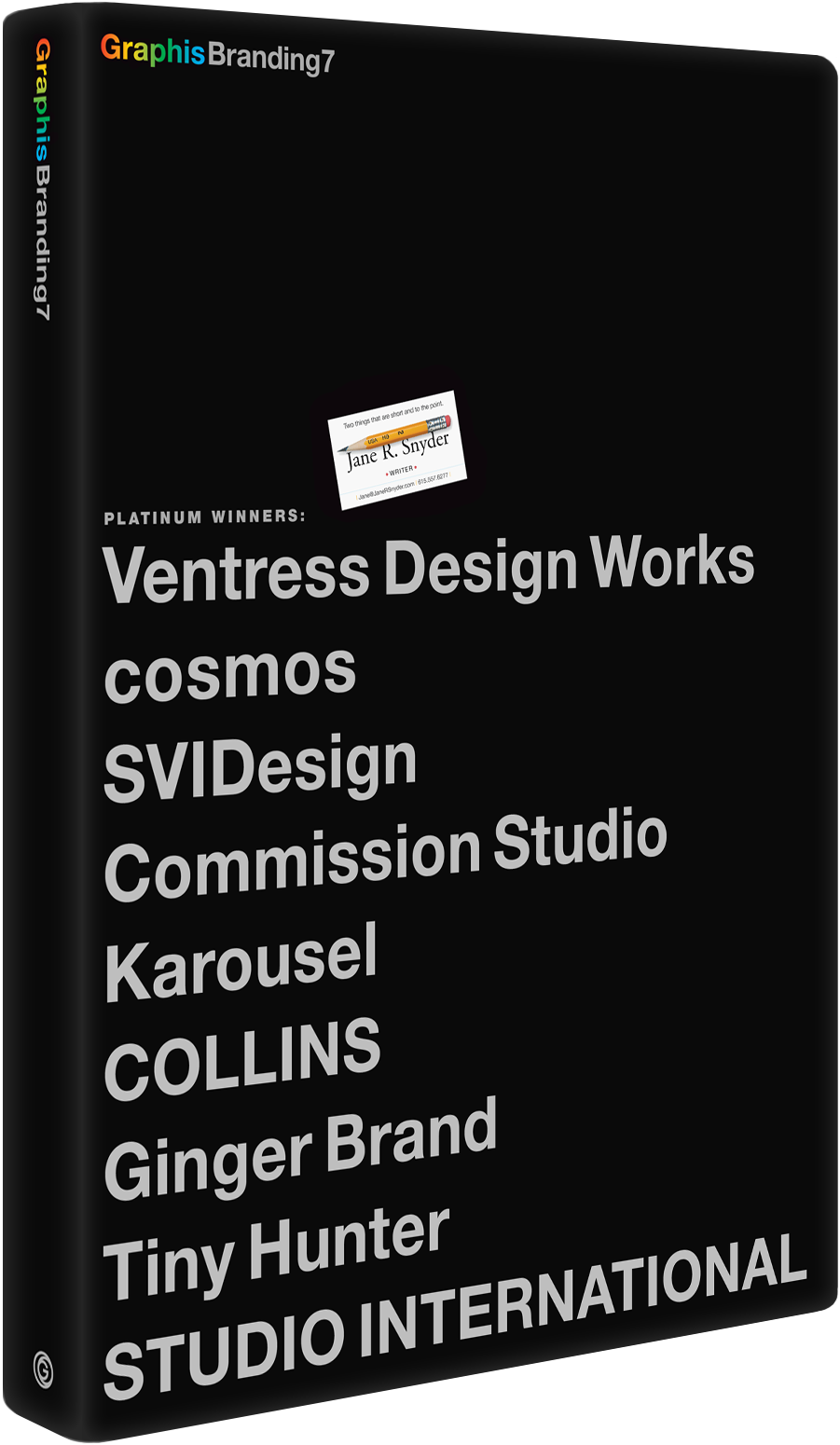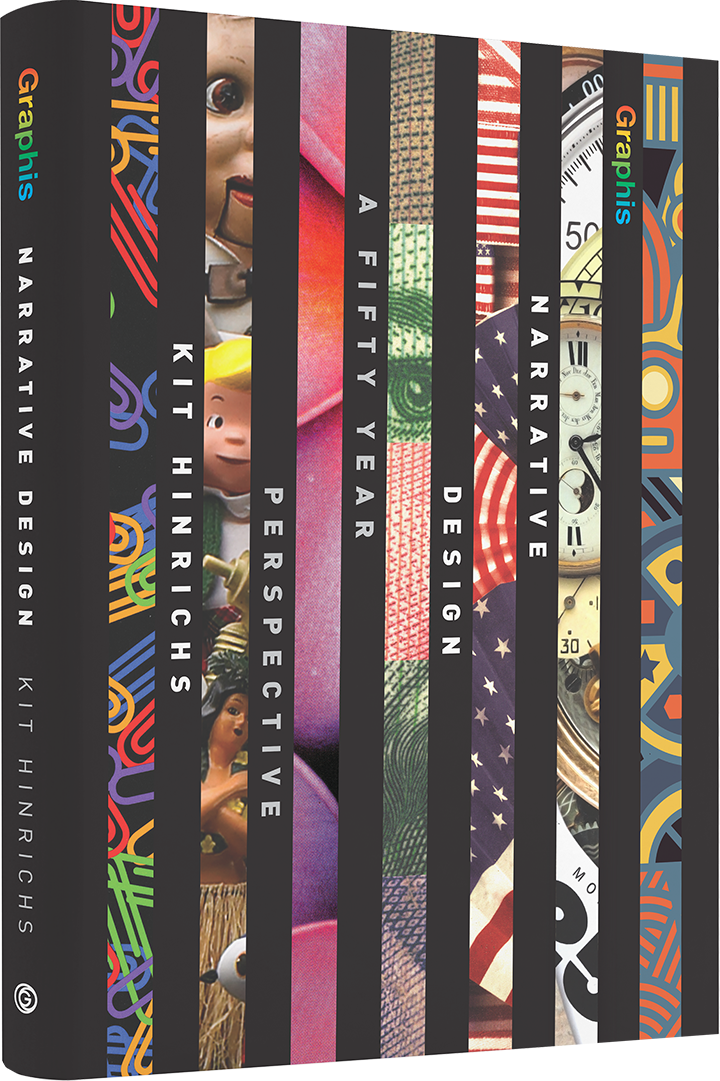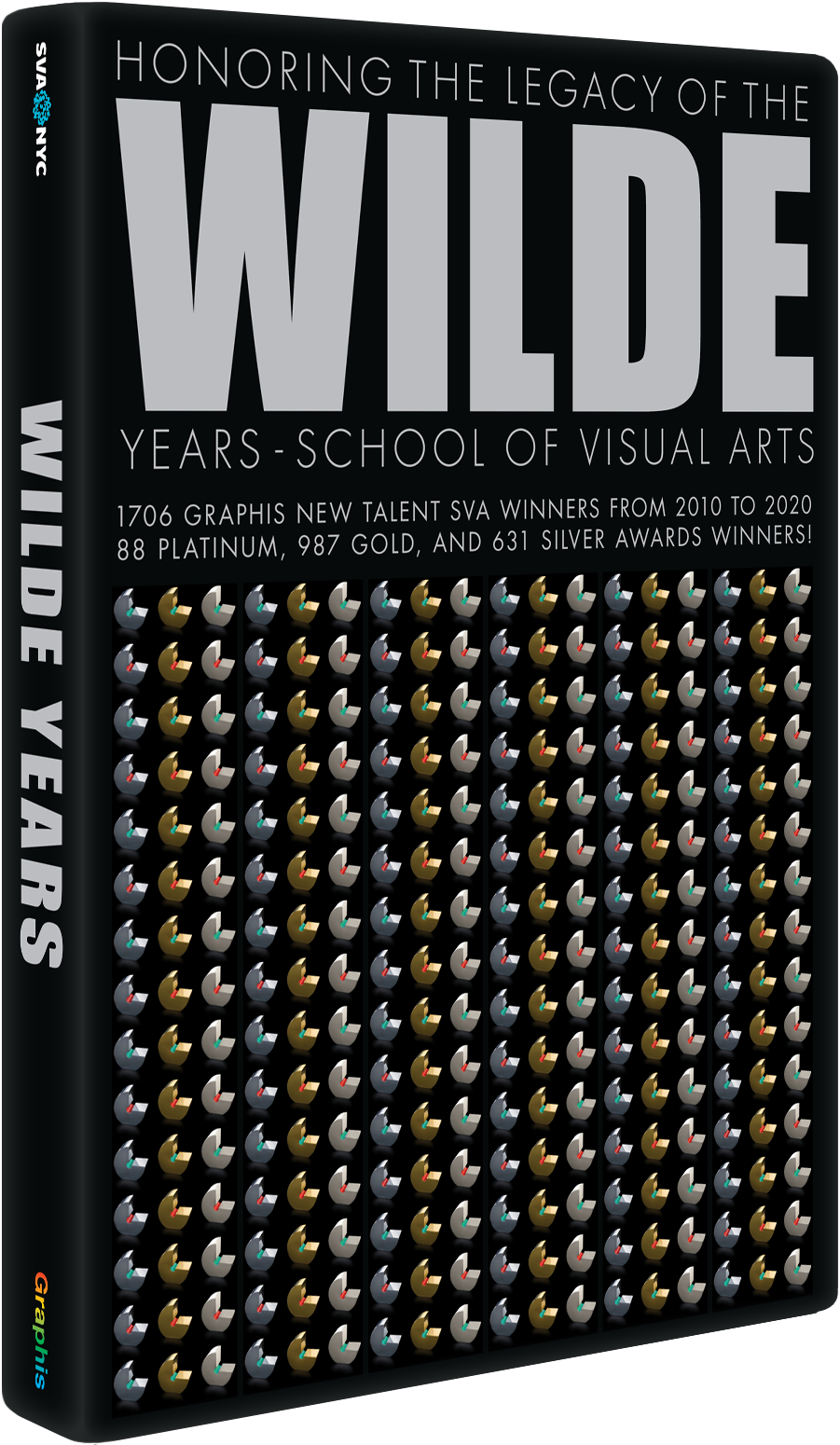From Lacrosse Fields to “Got Milk?”: How Goodby Silverstein & Partners Redefined Creative Cool
When you think of advertising that’s as smart as it is subversive—ads that make you laugh, think, and maybe crave a glass of milk—chances are, Goodby Silverstein & Partners is behind it. The legendary agency has been churning out groundbreaking campaigns for decades, from the iconic Budweiser Lizards to redefining Silicon Valley tech storytelling. Founders Rich Silverstein and Jeff Goodby have built more than an agency; they’ve created a culture. Equal parts rebellious and meticulous, GS&P thrives at the intersection of artistry, wit, and humanity. In this candid Q&A, featured in The Graphis Journal #383, the duo pulls back the curtain on their creative philosophies, the evolution of advertising, and the timeless power of a good mentor—or a killer Helvetica typeface. This is the story of two industry giants who refuse to rest on their laurels, proving the best ideas are always the ones no one’s thought of yet.
Introduction by Margaret Johnson, Chief Creative Officer & Partner, GS&P
Working for Jeff Goodby and Rich Silverstein is like riding shotgun with the Terminator—relentless, unstoppable, and exhausting in the best soul-crushing way. Jeff’s all about digging up the surprise in everything, pulling diamonds out of the mud. Rich? He’s a lightning bolt and sees the solution before you’ve finished explaining the brief. But here’s the kicker: These guys *never* repeat themselves. They reinvent. They push. Mentors, legends—and, yeah, they’ll knock you down just to make you come back stronger.
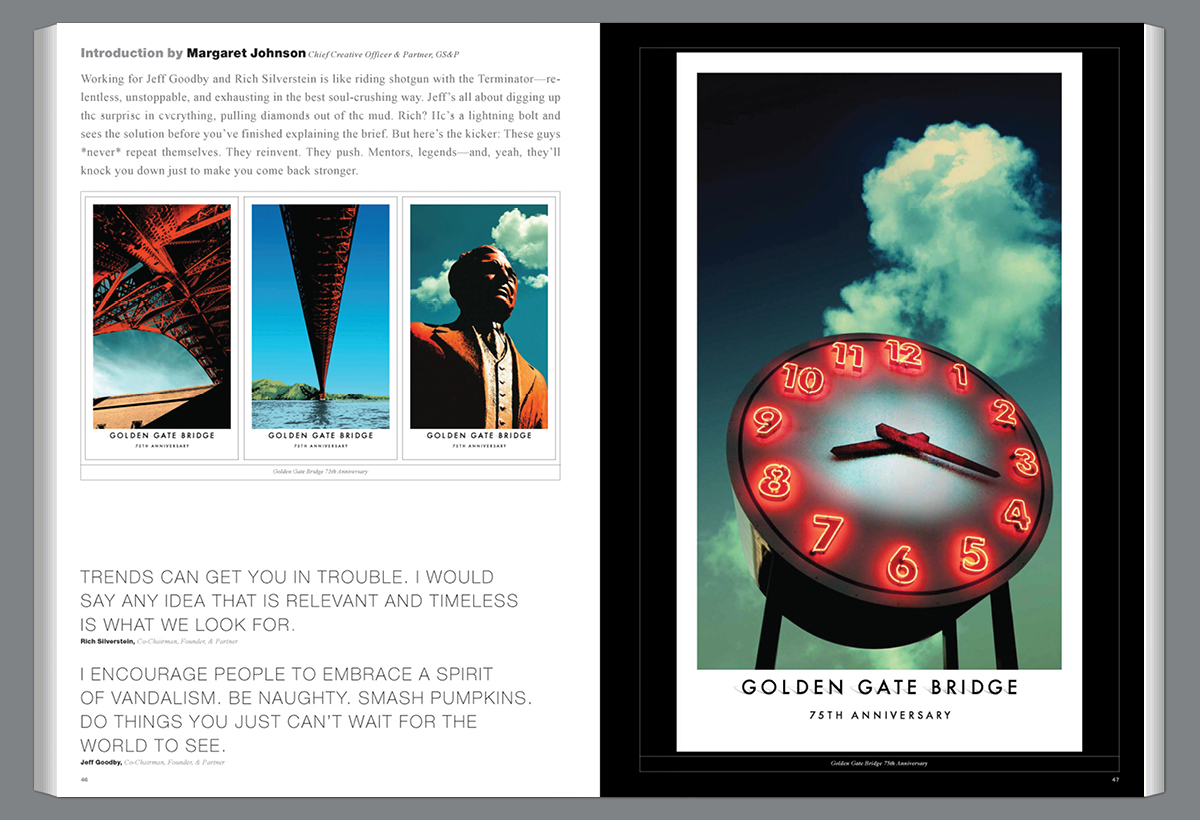
What has inspired or motivated you in your career?
Rich Silverstein, Co-Chairman, Founder, & Partner: Growing up, there were no cell phones, internet, or search engines. Apple was a music label. Silicon Valley grew fruit. Artisans actually handset type. Retouching was done with a brush and knife, not Photoshop. And you cut film by hand. There was no 24-hour news, and there were three TV stations, not counting PBS, which no one actually watched. It was too dull.
So let’s start at 2937 Meadowcrest Drive, Yorktown Heights, New York. Northern Westchester, Middle America. In that house behind me, all the insecurities that any kid had? That’s me. And then came TIME magazine. Oh my God, it was a window into the world. One section, the art section, just spoke to me. I don’t even know why, but visually, I continuously pored over it.
How do you two see your roles evolving alongside the next generation of leaders at GS&P?
R.S.: Jeff and I will continue working on accounts, but we have also inspired a new level of creative directors to take a more hands-on approach to our clients. Jeff and I love to teach and become editors of great work. Our doors are always open at any level to hear ideas and help shape the work.
Jeff Goodby, Co-Chairman, Founder, & Partner: In the book Built to Last, they say the first responsibility of a great business is to reproduce what’s great about it without getting stuck in a rut. I think Rich and I are doing that in a couple of ways. I have instituted a formal mentorship program in which I meet with four different people each week for a month. We also act as trusting sorcerers rather than insistent kings. We are lucky to not only have Leslie and Margaret, but also a whole battery of terrific people around them. Stand back and let the big dogs eat.
What is your work philosophy?
R.S.: When you’re a graphic designer, the evil is advertising. And somehow, I’ve found myself in advertising. But [Jeff and I] have always tried to bring the aesthetic of graphic design and editorial together.
What balance do you strike between tradition and innovation at GS&P, especially with new technologies like AI?
R.S.: We embrace and demand powerful storytelling ideas that can come from any form of media. The medium is the message! So traditional and innovative ideas are just different ways to play in a creative sandbox. We were working in AI for BMW and the Dali Museum before it was called AI.
J.G.: Our tradition IS innovation. I tell people: If your brother or sister or best friend or some guy from college could have thought of it, don’t do it. We love things that have never been done before. That might be AI right now, but we want to do the next thing after that.
Who is or was your greatest mentor?
R.S.: After high school, I went to Parsons School of Design, but I actually didn’t think art school was all that important. Really, what I did is I found this mentoring idea, finding someone who I could look up to, and Dick Hess, who was a Renaissance man, was a designer and illustrator who said, “To be in this business of design, you should be willing to do anything—shovel gravel at the designer’s house.” So I took him up on that, and I got an internship with Dick. That was my introduction. To this day, he has been a great influence on me. And I would say to anyone who is in this business and who is young—find mentors or, you know, work at any job to start.
Are there any emerging trends that GS&P should be leading as the industry evolves?
R.S.: Trends can get you in trouble. I would say any idea that is relevant and timeless is what we look for.
J.G.: I agree with Rich. There was a time in the ‘80s when we decided that the funniest things in the world always involved sex, food, and death. That kind of timelessness started around a campfire, and every great trend comes out of telling such stories.
What is it about design that you are most passionate about?
R.S.: I think the aesthetic of storytelling in print is really good and valuable.
In what ways do you both see GS&P’s core values being preserved and expanded by the next generation?
R.S.: Always treat the consumer respectfully, never talk down, and encourage them to participate in the message and 40-year-old timeless beliefs.
J.G.: I encourage people to embrace a spirit of vandalism. Be naughty. Smash pumpkins. Do things you just can’t wait for the world to see.
What is the most difficult challenge you’ve overcome to reach your current position?
R.S.: High school was pretty hard for me. I wasn’t a very good student. I know I’ve talked about this before. I didn’t know I was dyslexic. The one thing that got me through it was lacrosse. It’s an American Indian game. It’s brutal. It can be beautiful. My social studies teacher, Jim Turnbull, was also my coach. I’ve always looked to mentors, and that’s where it started.
What do the two of you consider essential for GS&P’s continued success and creative excellence?
R.S.: Never settle and always improve.
J.G.: Hiring people that are better than we are.
Who have some of your greatest past influences been?
R.S.: For me, the father of graphic design is Milton Glaser. There is no one better. Here’s a guy who attends art school and learns how to paint. Like, really paint. And then gives that up and finds a way to deconstruct that into beautiful graphic design. I mean, that Dylan poster is still good today; it’s amazing. It’s not just design; it’s wit. It had a language; it had an idea behind it. It’s not just fluff; it’s not just pretty. It’s the intelligence of graphic design that has moved me forever. I only hope that Jeff and I have a little bit of that in us.
It’s not just about the still image. There’s this guy named Saul Bass. He was a great designer, but he was so ahead of his time; he would take images and start moving them. And they became great title sequences for movies. So, you look at his work right now; it’s still great. And it’s because the idea has been put to music and has wit, energy, sound, and drama. It’s all out of two dimensions, animated.
One thing I haven’t talked about is photography. Between Diane Arbus and Irving Penn, I mean, I was like, “Yes.” Irving didn’t mind being in the commercial and art world together. And I’ve always admired that. It’s not only the aesthetic but also the craft of his printing. It’s all in the details. With Irving’s prints, you want to touch them. They’re alive. And it’s details like that that have stayed with me forever.
In what ways do you think the agency’s ethos will continue to influence the broader industry?
R.S.: Surprise and delight, or how in the hell do they keep doing great work?
J.G.: If you’re lucky enough to be successful, there’s a tendency to keep doing those things that got you there. We consciously fight this. I hope people will notice that we don’t have an agency style.
What do you consider your greatest professional achievement so far?
R.S.: After working at Rolling Stone, I got a job at Hal Riney. Hal was known as, you know, pretty much a genius of advertising and then a son of a bitch. And he said, “You’re going to be working with this guy, Jeff Goodby.” (I didn’t know who Jeff was.) “And you’re going to work on Billy Ball.”
Jeff loved baseball, and I liked its aesthetic. I didn’t know much about baseball. It worked. We discovered that we both don’t have to know much about the product; at least one does. But without Hal, there would be no Goodby, Silverstein & Partners.
If you could pass on one key piece of wisdom to the new leaders, what would it be?
R.S.: Be humble, be smart, be kind, and respect the client.
J.G.: Be brutally honest with yourself. How good is your work, really?
What advice do you have for students starting out today?
R.S.: I would say to everyone: Have mentors, have people you look up to, study things, don’t try to do everything yourself, and there’s always something to learn. Because I’m still learning.
Where do you find inspiration?
R.S.: In art school, I was introduced to Bauhaus, and there wasn’t any aesthetic in the Bauhaus that was wrong. It was so exciting. It didn’t matter if it was graphic design, photography, fashion, jewelry, or architecture. Even today, if I see Bauhaus design, I actually get goosebumps.
I also remember being introduced to Helvetica in art school, and that is another thing that changed my life. I mean, the Swiss design—I didn’t know anything about it. And still, even today, type is so important to me.
Jeff Goodby is a writer, artist, and director best known for his work at his advertising agency Goodby, Silverstein & Partners. He grew up in Rhode Island and graduated from Harvard, where he wrote for The Harvard Lampoon. While working as a newspaper reporter in Boston, his illustrations were published in TIME, Mother Jones, and other leading national magazines. Jeff is perhaps best known for creations like “Got Milk?” and the Budweiser Lizards. He is a member of the New York One Club Hall of Fame, and in 2019, he and Rich Silverstein received the Cannes Lion of St. Mark Award for lifetime achievement. In 2020, the two starred in an 18-part MasterClass online learning series.
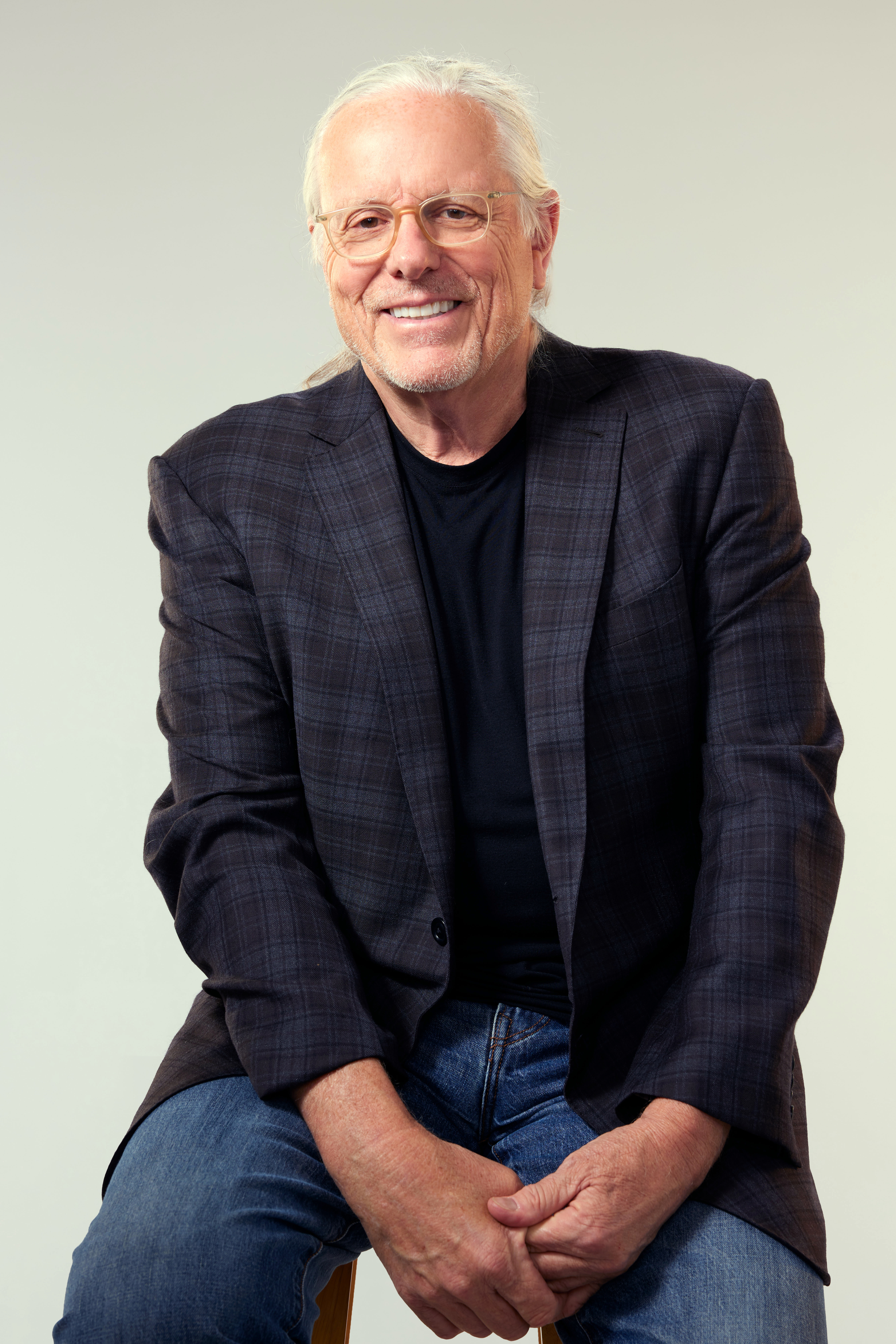
Rich Silverstein grew up in New York, attended Parsons School of Design, and moved to San Francisco to work as an art director at Rolling Stone and agencies like Bozell & Jacobs, McCann Erickson, Ogilvy & Mather, and Foote, Cone & Belding before founding Goodby, Silverstein & Partners. Rich was named Adweek’s “Executive of the Decade” and is a member of the New York Art Directors Club and The One Club’s Hall of Fame. In 2019, he and Jeff Goodby received the Cannes Lion of St. Mark Award for lifetime achievement, and in 2020, the two starred in an 18-part MasterClass online learning series.
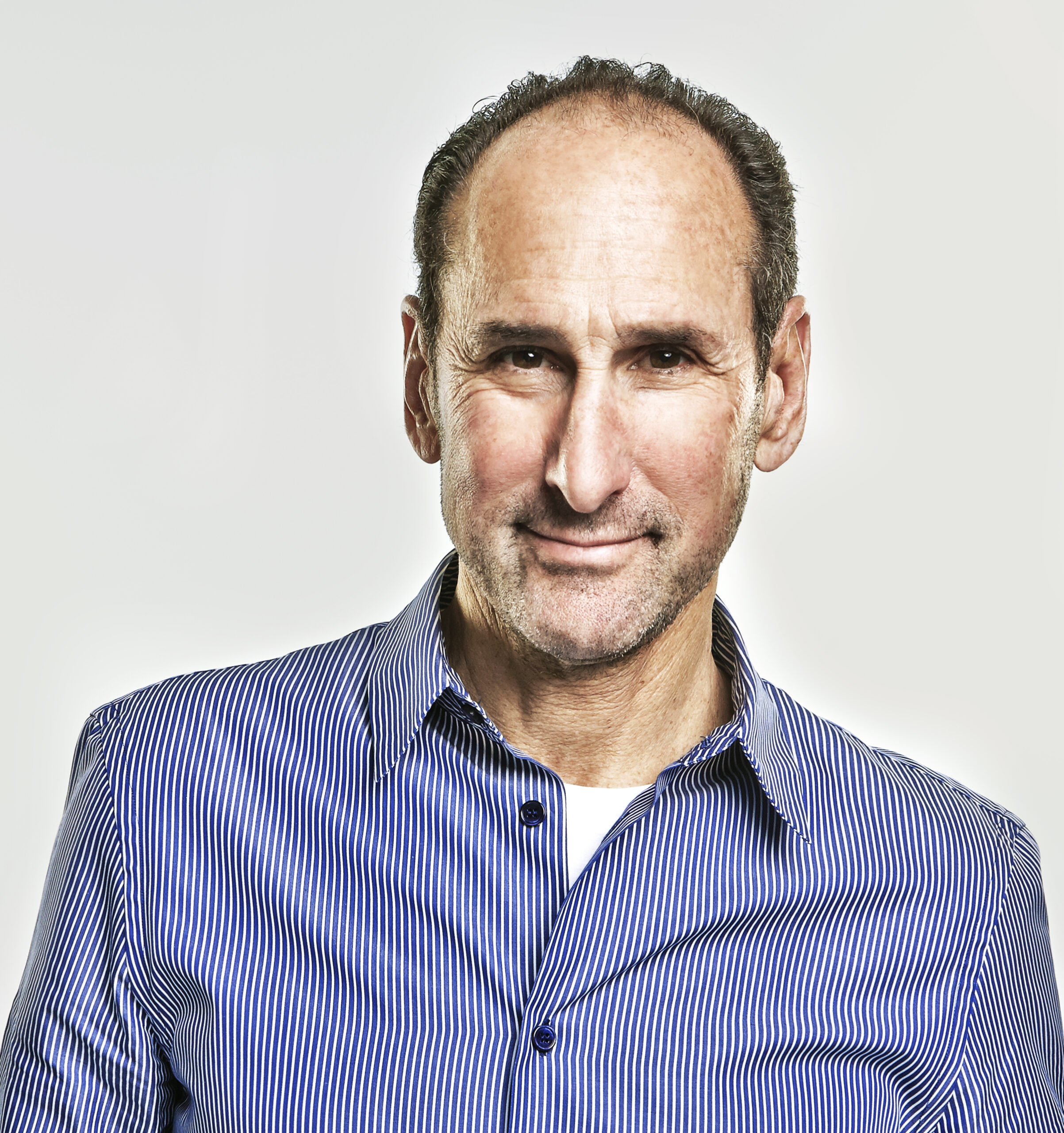
Social: Instagram, Facebook, LinkedIn, X (Twitter)
To discover other talents in issue #383 of The Graphis Journal, click here.
You may also like
Sunlight, Foam, and Perfect Pours: Carlsberg Like You’ve Never Seen
A simple beer has never looked this good. Jonathan Knowles, the photographer who is awarded Gold in…
Read MoreWhere Legends Lift Off: Paal Anand’s Cinematic Vision Unbound
Paal Anand brings a cinematic edge to still imagery, transforming myth and memory into finely staged visual…
Read More
Related Annuals & Publications
View AllBecome a Graphis Member
- 1-Year Membership Subscription
- Enjoy 50% off on Call for Entries
- 1-Year FREE Subscription to Graphis Journal
- Your Portfolio online with profile + links
- Get 20% off on Graphis Books
